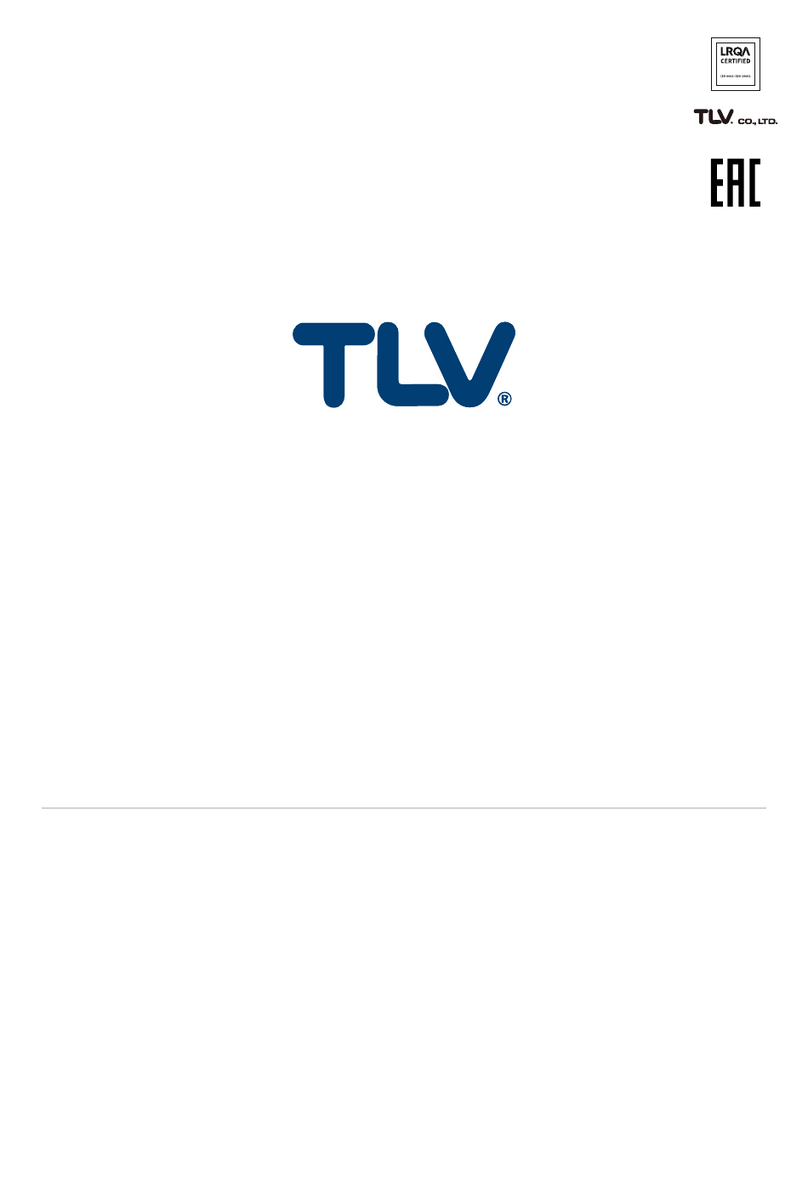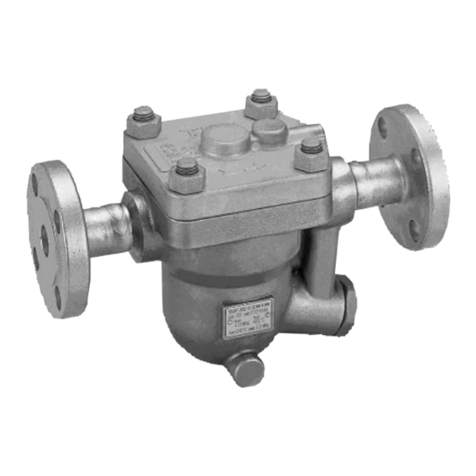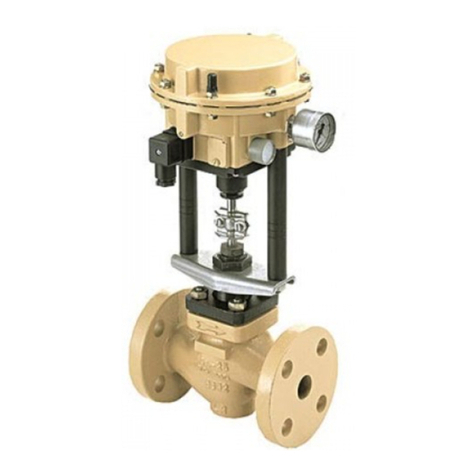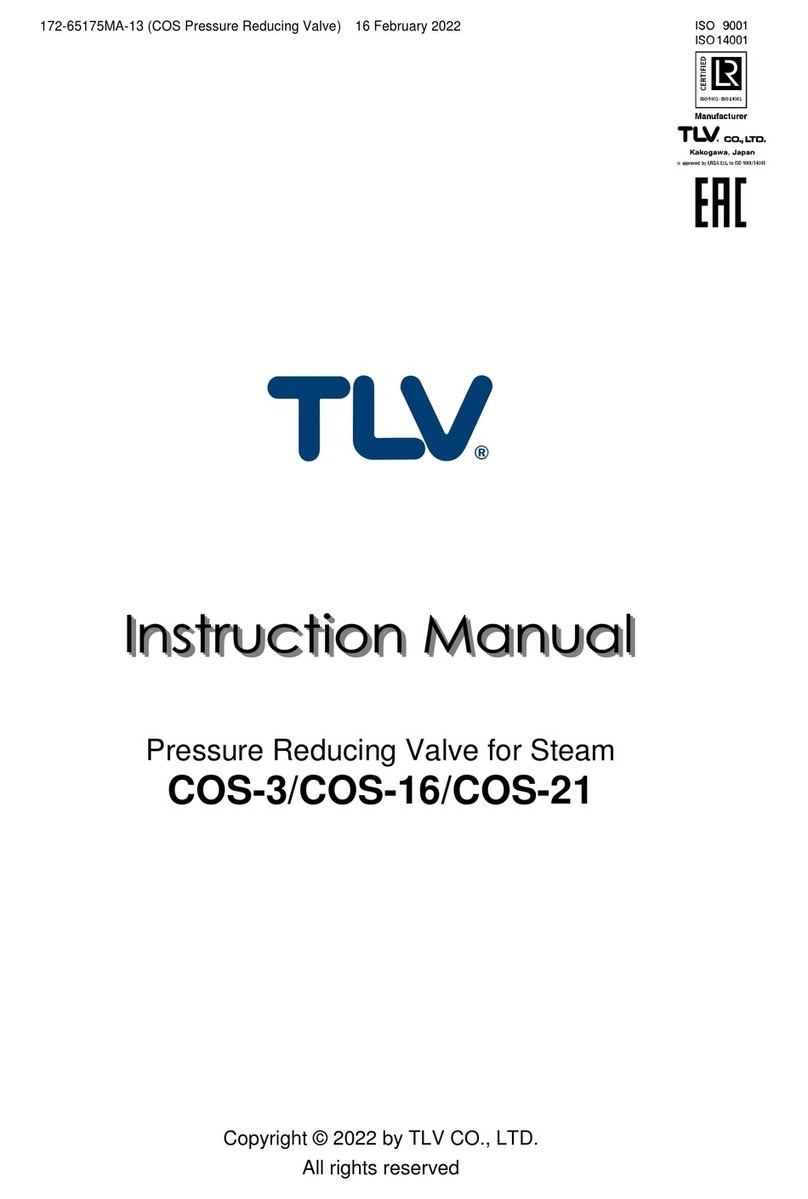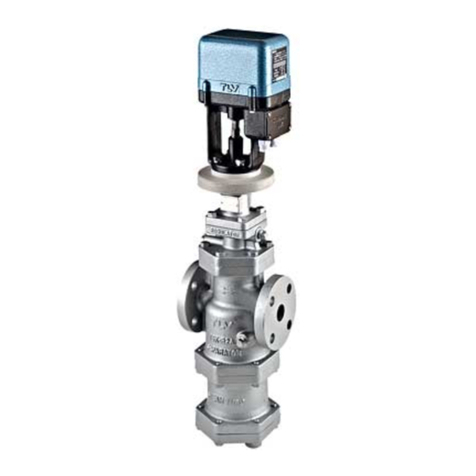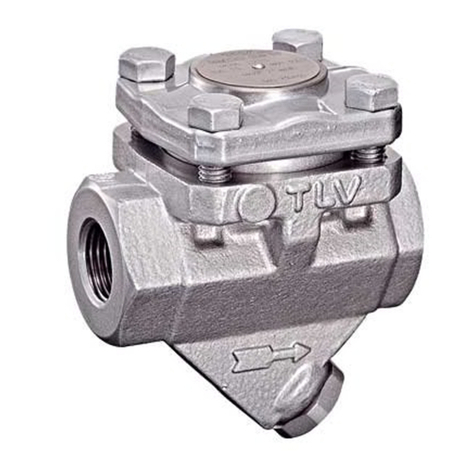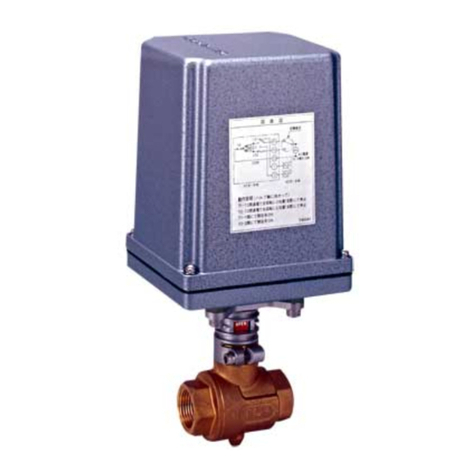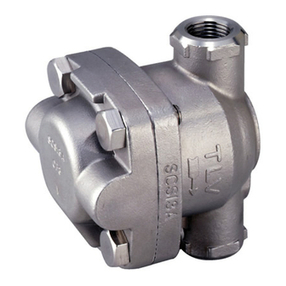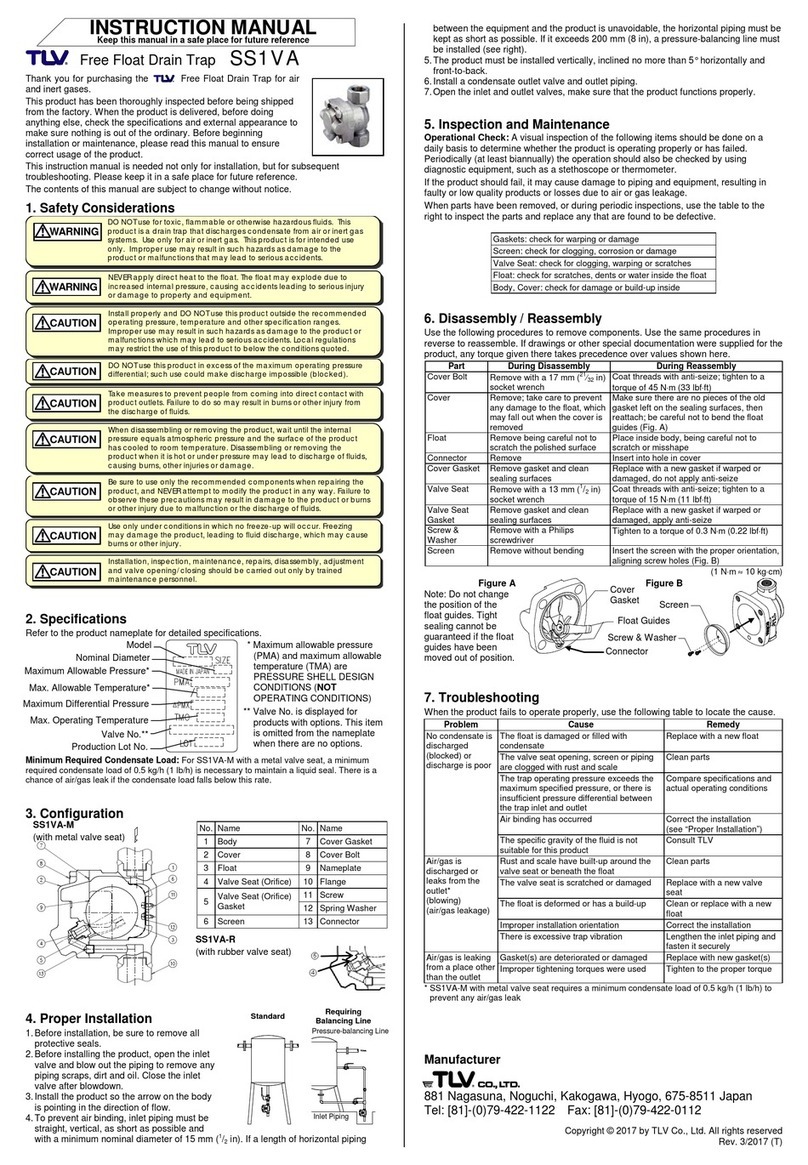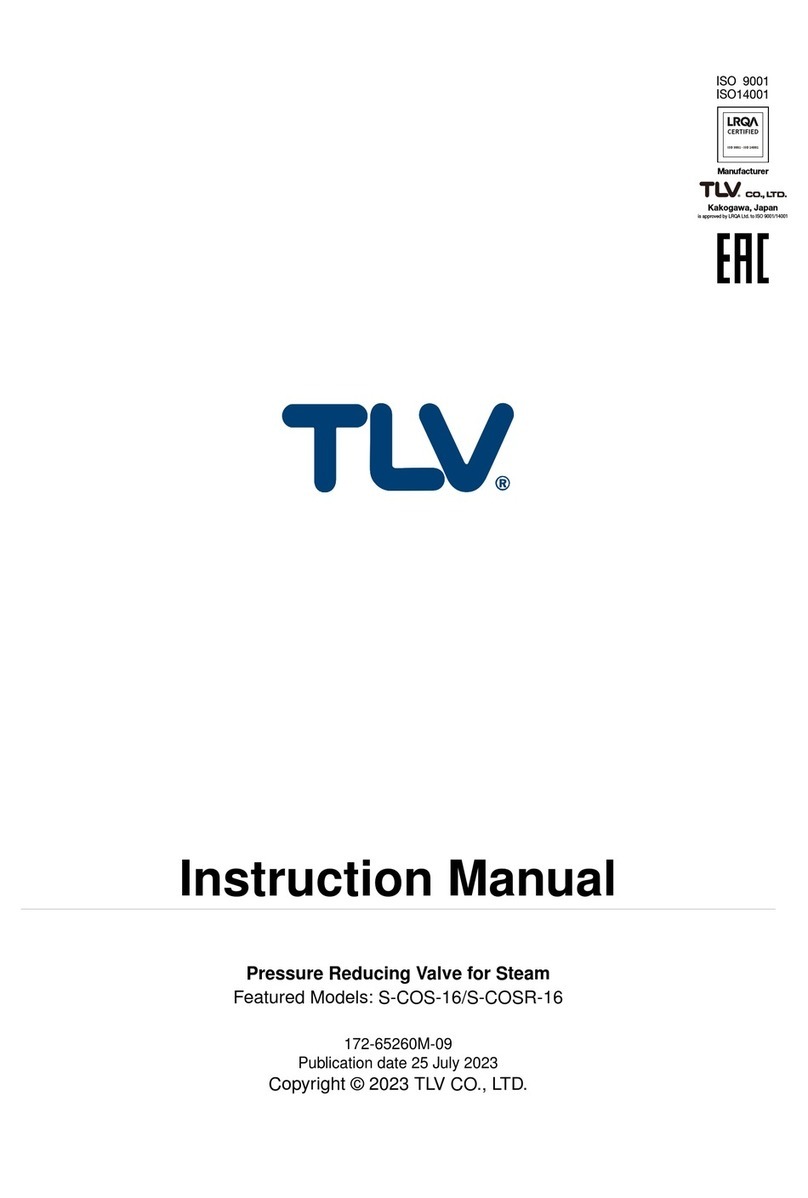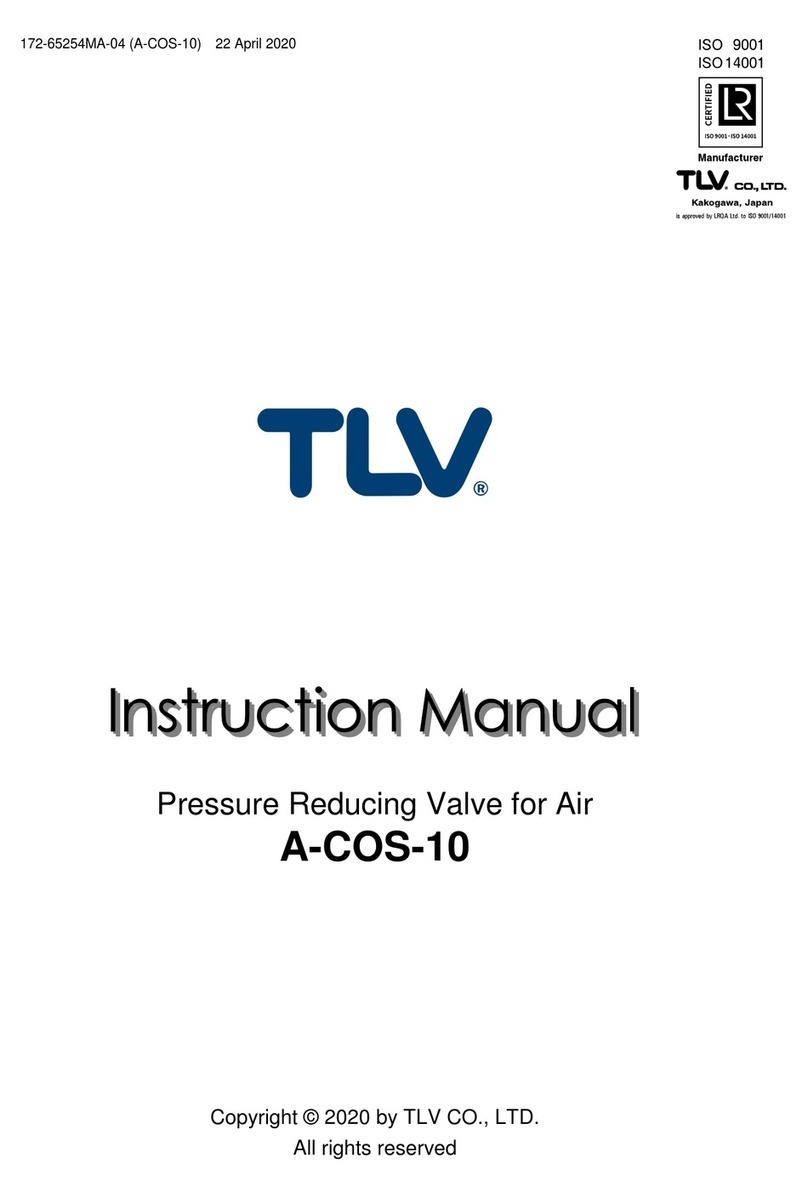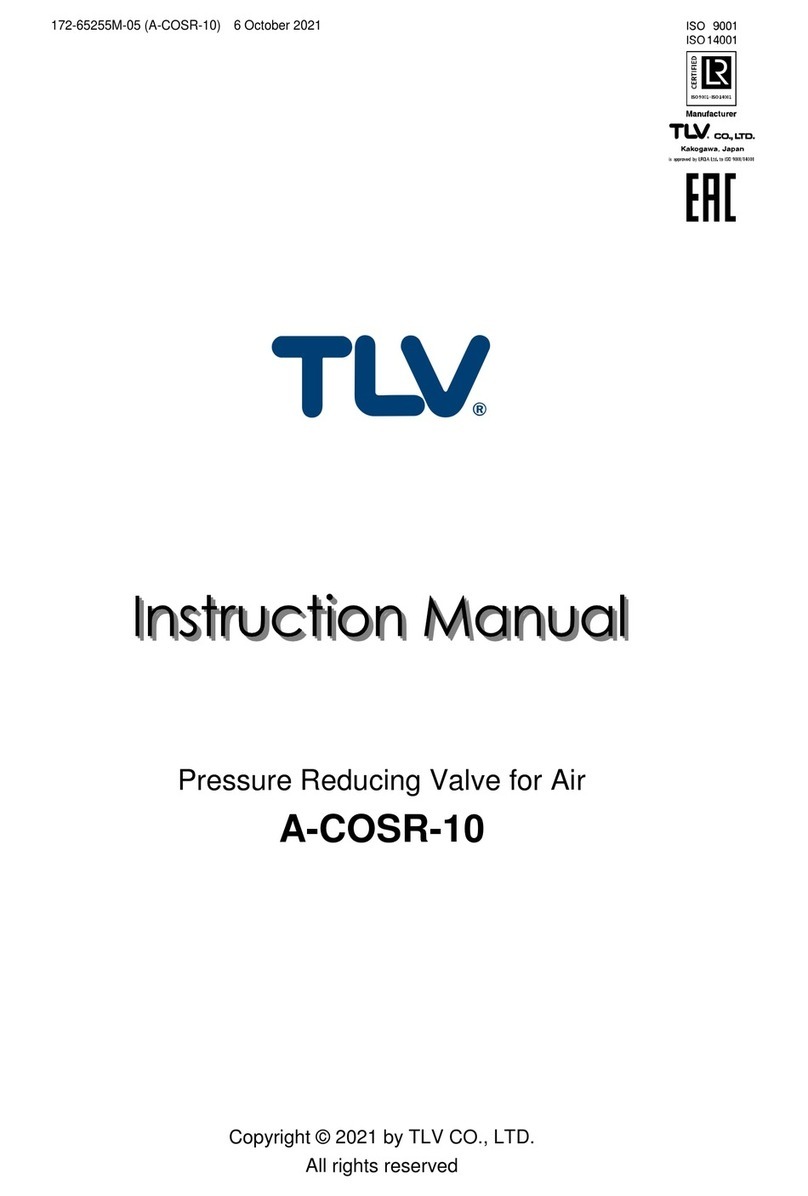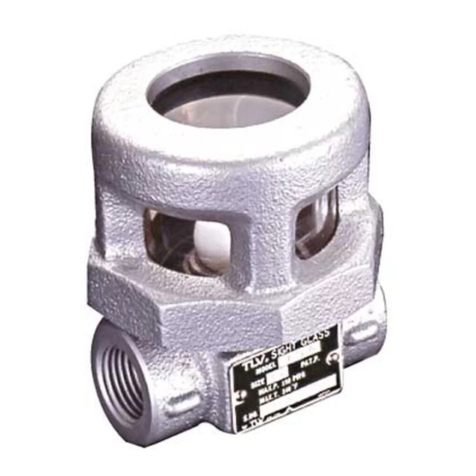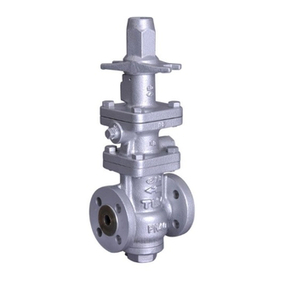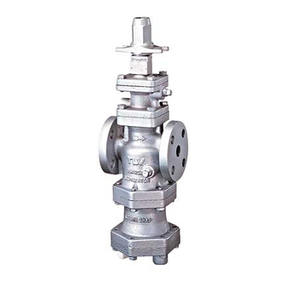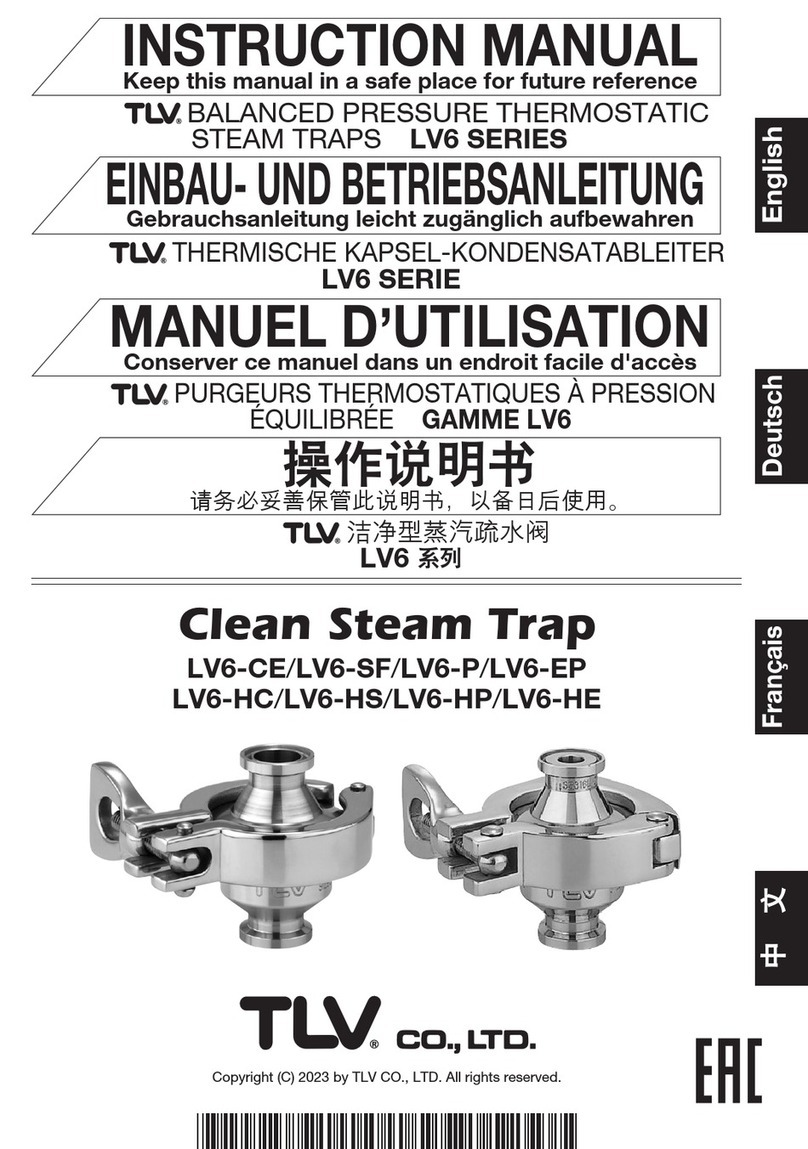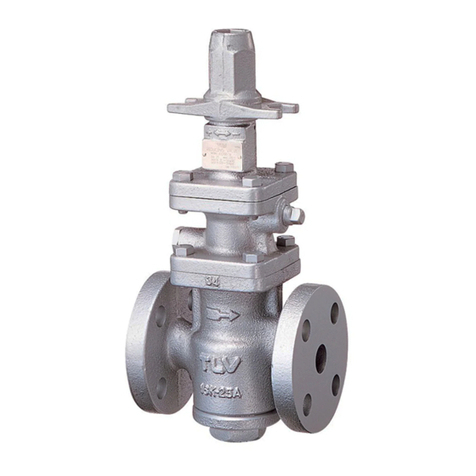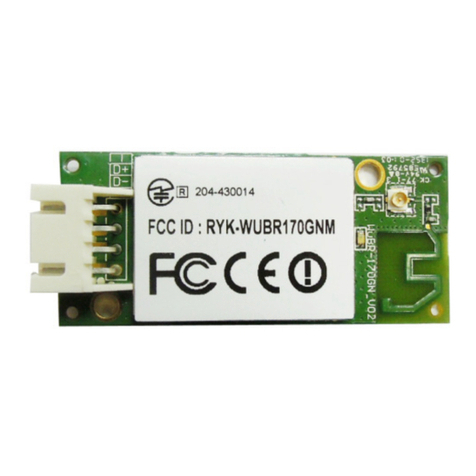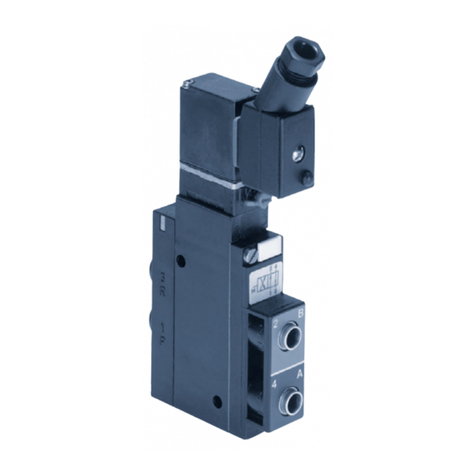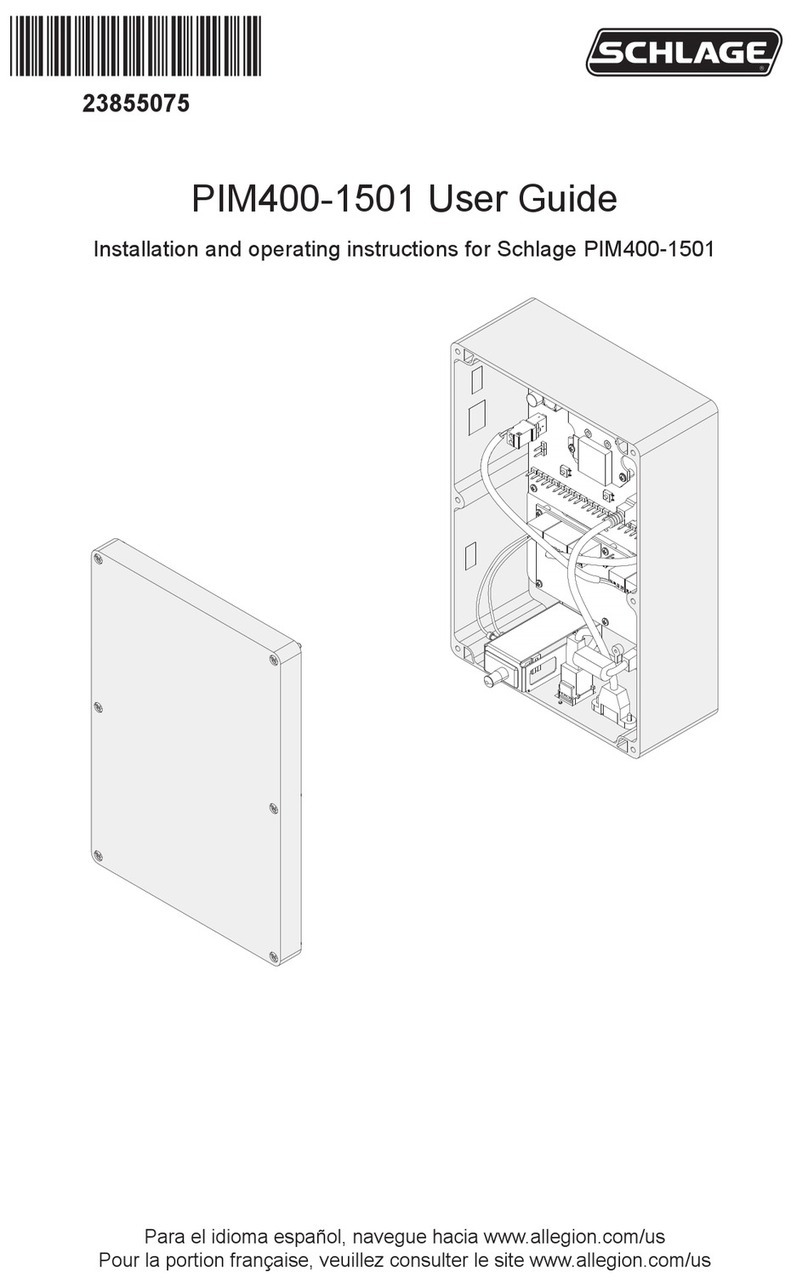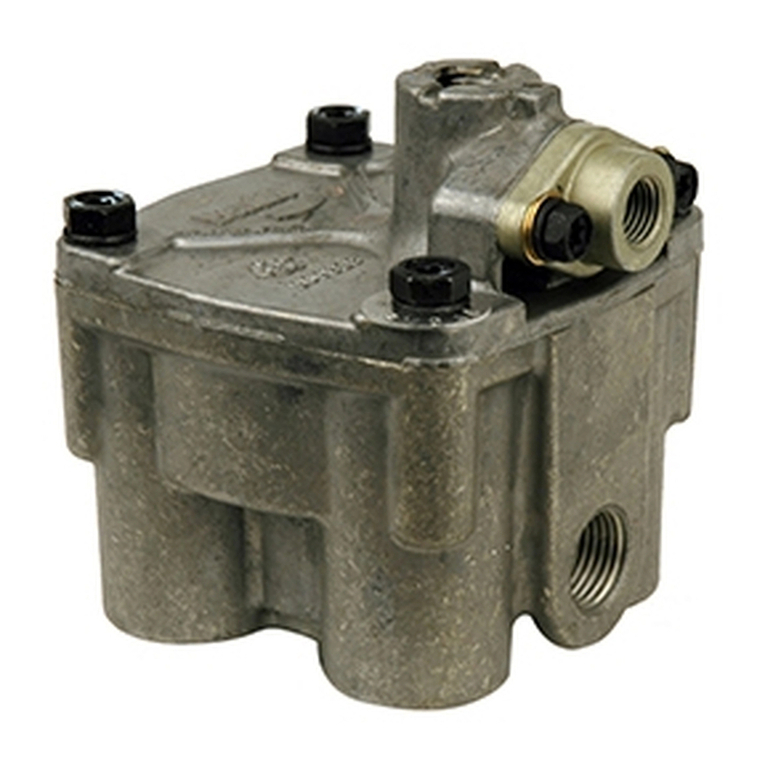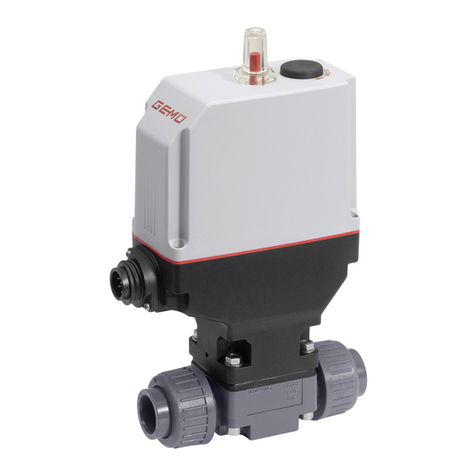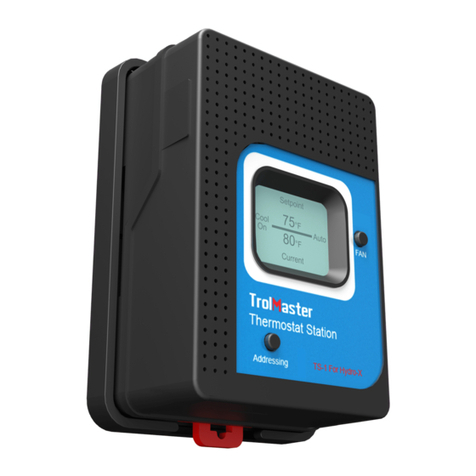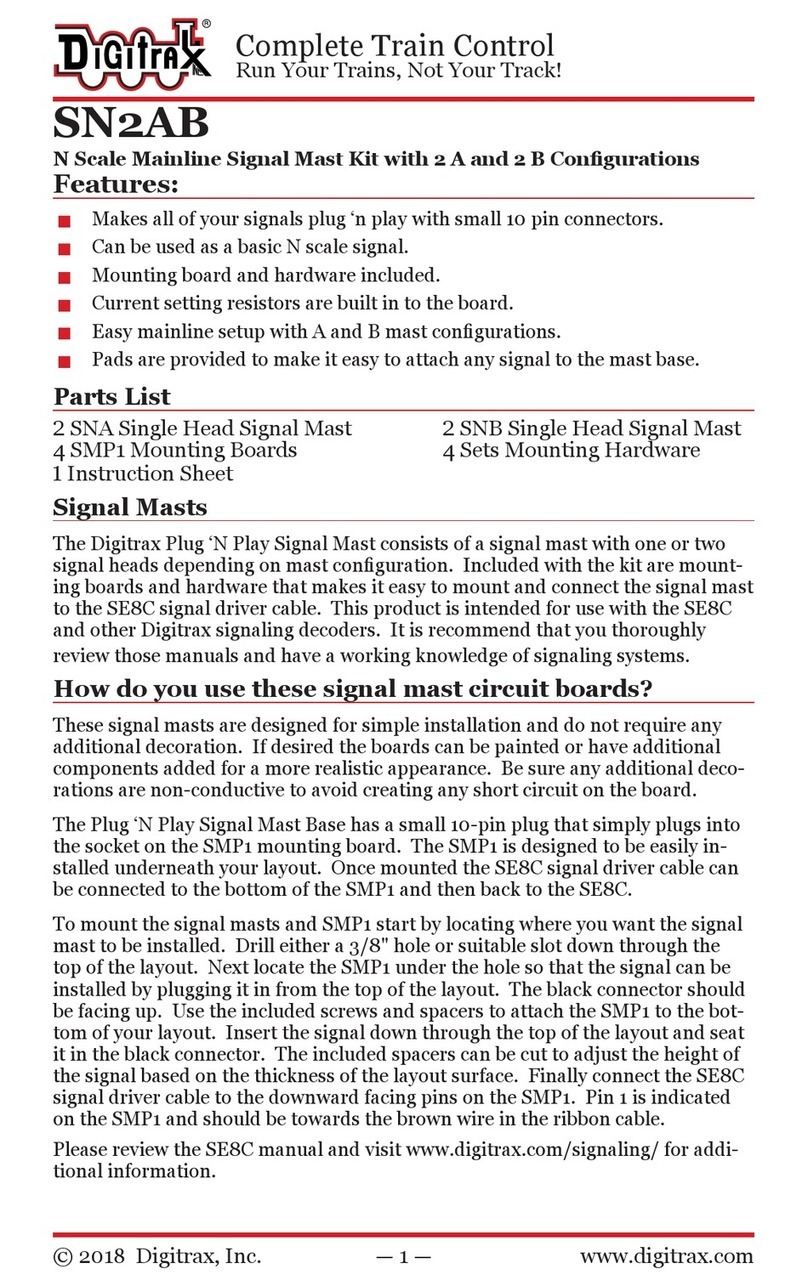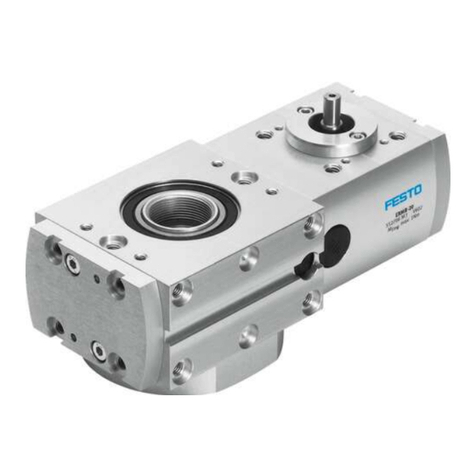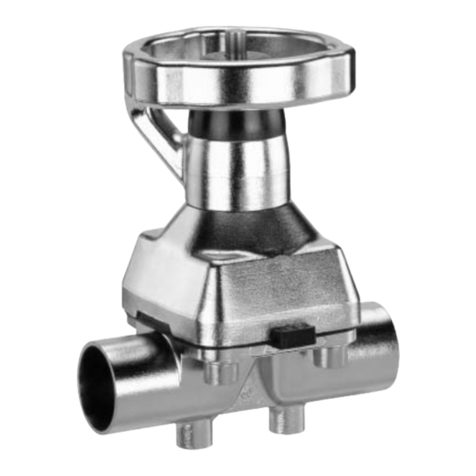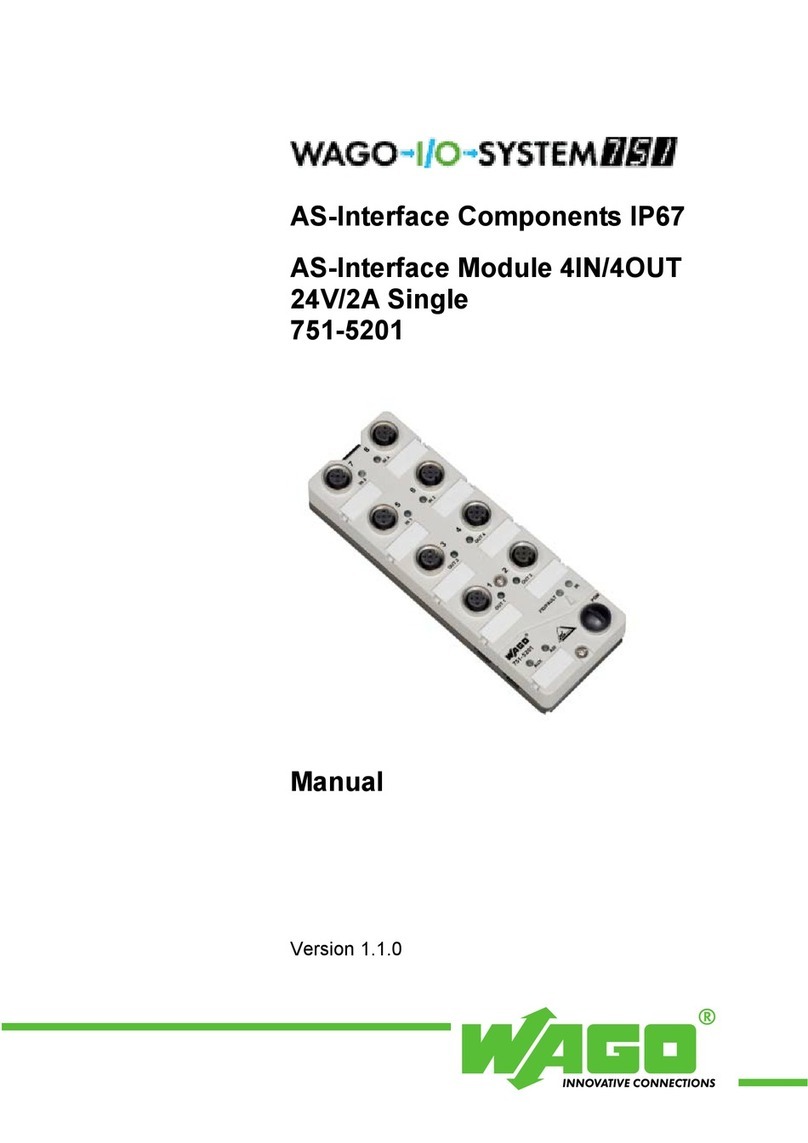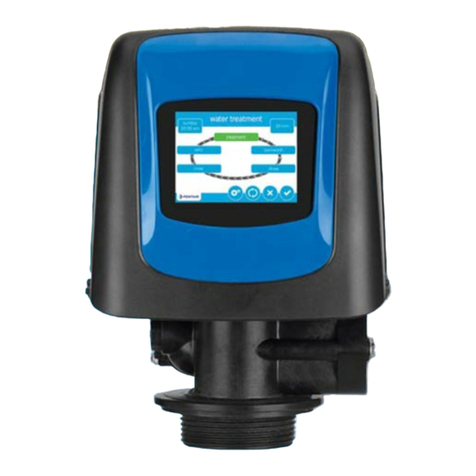TLV CV10 User manual

172-65097M-05 (CV10 Control Valve) 7 October 2021
Control Valve
CV10
(For Valve Unit with Actuator)
Copyright © 2021 by TLV CO., LTD.
All rights reserved

172-65097M-05 (CV10 Control Valve) 7 Oct 2021
1
Contents
Introduction.........................................................................1
Safety Considerations ........................................................2
Specifications .....................................................................4
Configuration ......................................................................6
Installation ..........................................................................8
Maintenance.......................................................................9
Disassembly/Reassembly (Direct Action/Air-to-Close).....10
Disassembly/Reassembly (Reverse Action/Air-to-Open).14
Troubleshooting................................................................22
TLV EXPRESS LIMITED WARRANTY............................24
Service..............................................................................26
Introduction
Thank you for purchasing the TLVCV10 control valve.
This product has been thoroughly inspected before being shipped from the
factory. When the product is delivered, before doing anything else, check the
specifications and external appearance to make sure nothing is out of the
ordinary. Also be sure to read this manual carefully before use and follow the
instructions to be sure of using the product properly.
If detailed instructions for special order specifications or options not contained in
this manual are required, please contact TLV for full details.
This instruction manual is intended for use with the model(s) listed on the front
cover. It is necessary not only for installation, but for subsequent maintenance,
disassembly/reassembly and troubleshooting. Please keep it in a safe place for
future reference.

172-65097M-05 (CV10 Control Valve) 7 Oct 2021
2
Safety Considerations
Read this section carefully before use and be sure to follow the instructions.
Installation, inspection, maintenance, repairs, disassembly, adjustment and valve
opening/closing should be carried out only by trained maintenance personnel.
The precautions listed in this manual are designed to ensure safety and prevent
equipment damage and personal injury. For situations that may occur as a result of
erroneous handling, three different types of cautionary items are used to indicate the
degree of urgency and the scale of potential damage and danger: DANGER,
WARNING and CAUTION.
The three types of cautionary items above are very important for safety: be sure to
observe all of them as they relate to installation, use, maintenance, and repair.
Furthermore, TLV accepts no responsibility for any accidents or damage occurring as
a result of failure to observe these precautions.
Symbols
Indicates a DANGER, WARNING or CAUTION item.
Indicates an urgent situation which poses a threat of death or
serious injury
Indicates that there is a potential threat of death or serious injury
Indicates that there is a possibility of injury or equipment/product
damage
Install properly and DO NOT use this product outside the
recommended operating pressure, temperature and other
specification ranges.
Improper use may result in such hazards as damage to the product or
malfunctions that may lead to serious accidents. Local regulations
may restrict the use of this product to below the conditions quoted.
Use hoisting equipment for heavy objects (weighing
approximately 20 kg or more).
Failure to do so may result in back strain or other injury if the object
should fall.
Take measures to prevent people from coming into direct
contact with product outlets.
Failure to do so may result in burns or other injury from the discharge
of fluids.
When disassembling or removing the product, wait until the
internal pressure equals atmospheric pressure and the surface
of the product has cooled to room temperature.
Disassembling or removing the product when it is hot or under
pressure may lead to discharge of fluids, causing burns, other injuries
or damage.
Continued on the next page
DANGER
WARNING
CAUTION
CAUTION

172-65097M-05 (CV10 Control Valve) 7 Oct 2021
3
Be sure to use only the recommended components when
repairing the product, and NEVER attempt to modify the product
in any way.
Failure to observe these precautions may result in damage to the
product and burns or other injury due to malfunction or the discharge
of fluids.
Use only under conditions in which no freeze-up will occur.
Freezing may damage the product, leading to fluid discharge, which
may cause burns or other injury.
Use only under conditions in which no water hammer will occur.
The impact of water hammer may damage the product, leading to
fluid discharge, which may cause burns or other injury.
CAUTION

172-65097M-05 (CV10 Control Valve) 7 Oct 2021
4
Specifications
Install properly and DO NOT use this product outside the recommended
operating pressure, temperature and other specification ranges.
Improper use may result in such hazards as damage to the product or
malfunctions which may lead to serious accidents. Local regulations
may restrict the use of this product to below the conditions quoted.
CAUTION
Use only under conditions in which no freeze-up will occur. Freezing
may damage the product, leading to fluid discharge, which may cause
burns or other injury.
CAUTION
Refer to the product nameplate for detailed specifications.
*Maximum allowable pressure (PMA) and maximum allowable temperature (TMA) are
PRESSURE SHELL DESIGN CONDITIONS, NOT OPERATING CONDITIONS.
**Valve No. is displayed for products with options. This item is omitted from the nameplate when
there are no options.
Valve (partial list of standard specifications)
Connection
IEC534.3-1 (long face-to-face)
Applicable Fluids*
Steam, Water, Air
Valve Construction
Single-seat globe valve
Rangeability
50:1 (15 to 50 mm)
30:1 (65 to 150 mm)
Valve Leakage Rate
Rated Cv value capacity %
Metal seat 0.01% or less (ANSI B16 104-1976 Class IV)
PTFE seat 0.0001% or less (ANSI B16 104-1976 Class VI)
*DO NOT use for toxic, flammable or otherwise hazardous fluids.
Actuator (partial list of standard specifications)
Actuator
Pneumatic
Pneumatic Connection
Rc(PT)1/415 to 40 mm / Rc(PT)3/850 to 150 mm
Ambient Temperature
50 °C
Model
Nominal Diameter
Maximum Allowable*
Pressure*
Maximum Operating
Pressure
Maximum Allowable
Temperature (TMA)*
Maximum Operating
Temperature (TMO)
Valve No.**
Production Lot No.
Operating Direction
Pressure supplied to Regulator
Pressure supplied to
Positioner
Valve Material
Valve Characteristic
Stroke
<Valve Specification>
<Actuator Specification>
Cv Value

172-65097M-05 (CV10 Control Valve) 7 Oct 2021
5
Direct Action (Air-to-Close) (partial list of standard specifications)
Size
(mm)
Pressure Supplied
to Filter/Regulator
Air Pressure
Supplied to Positioner
Air Pressure
Supplied to Actuator
(Spring Range)
Air Pressure
Supplied during Lift
Adjustment
15
0.16 to 0.9 MPaG
0.14 MPaG
0.02 to 0.1 MPaG
0.09 MPaG
20
0.24 to 0.9 MPaG
0.24 MPaG
25
0.24 to 0.9 MPaG
0.24 MPaG
40
0.24 to 0.9 MPaG
0.24 MPaG
50
0.24 to 0.9 MPaG
0.24 MPaG
65
0.24 to 0.9 MPaG
0.24 MPaG
80
0.41 to 0.9 MPaG
0.4 MPaG
100
0.24 to 0.9 MPaG
0.24 MPaG
150
0.41 to 0.9 MPaG
0.4 MPaG
(1 MPa = 10.197 kg/cm2)
Reverse Action (Air-to-Open) (partial list of standard specifications)
Size
(mm)
Pressure Supplied
to Filter/Regulator
Air Pressure
Supplied to Positioner
Air Pressure
Supplied to Actuator
(Spring Range)
Air Pressure
Supplied during
Lift Adjustment
15
0.16 to 0.9 MPaG
0.14 MPaG
0.02 to 0.1 MPaG
0.01 MPaG
20
0.25 to 0.9 MPaG
0.22 MPaG
0.04 to 0.2 MPaG
0.03 MPaG
25
0.25 to 0.9 MPaG
0.22 MPaG
0.04 to 0.2 MPaG
0.03 MPaG
40
0.37 to 0.9 MPaG
0.35 MPaG
0.09 to 0.33 MPaG
0.08 MPaG
50
0.28 to 0.9 MPaG
0.26 MPaG
0.08 to 0.24 MPaG
0.07 MPaG
65
0.4 to 0.9 MPaG
0.38 MPaG
0.12 to 0.36 MPaG
0.11 MPaG
80
0.37 to 0.9 MPaG
0.35 MPaG
0.21 to 0.33 MPaG
0.2 MPaG
100
0.27 to 0.9 MPaG
0.25 MPaG
0.14 to 0.23 MPaG
0.13 MPaG
150
0.37 to 0.9 MPaG
0.35 MPaG
0.21 to 0.33 MPaG
0.2 MPaG
(1 MPa = 10.197 kg/cm2)

172-65097M-05 (CV10 Control Valve) 7 Oct 2021
6
Configuration
Direct Action (Air-to-Close, Fail Open)
No.
Name
No.
Name
1
Body
18
Bellowphragm Case (Upper Cover)
2
Valve Seat
19
Bellowphragm Holder
3
Valve
20
Nut with Seal Gasket
4
Valve Stem
21
Bellowphragm
5
Gasket
22
Coil Spring
6
Coil Springs
23
Bellowphragm Holder Nut
7
Washer
24
Actuator Stem
8
Gland Retainer
25
Bellowphragm Case (Lower Cover)
9
Stroke Gauge Holding Plate
26
Exhaust Tap
10
Stroke Gauge
27
Fixing Nut
11
Connecting Support Plate
28
Hex Bolt
12
Stroke Gauge Mounting Bolt
29
Nut (15 to 40 mm)
13
Bonnet
30
Coupling Nut
14
Nut
31
Locknut
15
Washer
32
Stud Bolt
16
Bolt
33
Nut
17
Bellowphragm Retaining Band
34
V-rings
1
2
3
4
5
6
7
8
9
10
11
12 13
14
15
16
17
18
19 20
21
22
23
24
25
28, 29
34
33
32
26
27
30
31

172-65097M-05 (CV10 Control Valve) 7 Oct 2021
7
Reverse Action (Air-to-Open, Fail Closed)
No.
Name
No.
Name
1
Body
18
Bellowphragm Case (Upper Cover)
2
Valve Seat
19
Bellowphragm Holder
3
Valve
20
Nut with Seal Gasket
4
Valve Stem
21
Bellowphragm
5
Gasket
22
Coil Spring
6
Coil Springs
23
Bellowphragm Holder Nut
7
Washer
24
Actuator Stem
8
Gland Retainer
25
Bellowphragm Case (Lower Cover)
9
Stroke Gauge Holding Plate
26
Exhaust Tap
10
Stroke Gauge
27
Fixing Nut
11
Connecting Support Plate
28
Hex Bolt
12
Stroke Gauge Mounting Bolt
29
Nut (15 to 40 mm)
13
Bonnet
30
Coupling Nut
14
Nut
31
Locknut
15
Washer
32
Stud Bolt
16
Bolt
33
Nut
17
Bellowphragm Retaining Band
34
V-rings
1
2
3
4
5
6
7
8
9
10
11
12 13
14
15
16
17
18
19 20
2122
23
24
25
28, 29
34
33
32
26
27
30
31

172-65097M-05 (CV10 Control Valve) 7 Oct 2021
8
Installation
Install properly and DO NOT use this product outside the recommended
operating pressure, temperature and other specification ranges.
Improper use may result in such hazards as damage to the product or
malfunctions which may lead to serious accidents. Local regulations
may restrict the use of this product to below the conditions quoted.
CAUTION
Use hoisting equipment for heavy objects (weighing approximately
20 kg or more). Failure to do so may result in back strain or other injury if
the object should fall.
CAUTION
Take measures to prevent people from coming into direct contact with
product outlets. Failure to do so may result in burns or other injury from
the discharge of fluids.
CAUTION
Installation, inspection, maintenance, repairs, disassembly, adjustment and valve
opening/closing should be carried out only by trained maintenance personnel.
Make sure that the piping where the product is to be installed is constructed properly.
If the piping is not correctly constructed, the valve may not perform optimally.
1. Before installation, be sure to remove all protective seals.
2. When installing the product, in order to facilitate installation and removal of the
actuator, leave a space of at least 150 mm above the top of the actuator, and a
space of at least 100 mm to allow for positioner cover removal.
3. Make sure that the temperature of the flow medium and the ambient temperature of
the installation location do not exceed the valve and actuator temperature limits.
4. Before installing the product, blow out the inlet piping to remove any piping scraps,
dirt, welding chips, etc.
5. This valve is a control valve. Though it adequately performs the function of a shutoff
valve at start-up, frequent use as a shutoff valve causes a drop in performance. Be
sure to install a manual or automated shutoff valve at inlet and outlets.
6. Do not install the valve in locations in the piping where foreign matter accumulates
or where impact from water hammer occurs.
7. Wherever possible, install the valve in horizontal piping, making sure that the
actuator is in a position as close to perpendicular to the piping as possible.
8. Be sure to install the valve so that the arrow showing on the body is pointing in the
direction of flow.
9. Be careful that the piping gaskets do not protrude beyond the inner diameter of the
flange. The type of medium being used and the temperature must be taken into
account in order to select a gasket of a suitable material.
10. Make sure that the valve is not bearing excessive weight from the piping and avoid
uneven tightening by making sure that all the bolts on the flange connection are
tightened evenly.
11. Before connecting the air lines for the air that is to be piped to the positioner/
actuator, blow out the air in the lines to remove any dirt, foreign matter, oil or water
from inside of the piping. Don’t use air that contains water or oil. If air that contains
water or oil is used, install an air filter/regulator (non-lubricator) to prevent the flow of
water or oil into the positioner.
If there is a problem, determine the cause using the “Troubleshooting” section in this
manual.

172-65097M-05 (CV10 Control Valve) 7 Oct 2021
9
Maintenance
Take measures to prevent people from coming into direct contact with
product outlets. Failure to do so may result in burns or other injury from
the discharge of fluids.
CAUTION
When disassembling or removing the product, wait until the internal
pressure equals atmospheric pressure and the surface of the product
has cooled to room temperature. Disassembling or removing the
product when it is hot or under pressure may lead to discharge of fluids,
causing burns, other injuries or damage.
CAUTION
Be sure to use only the recommended components when repairing the
product, and NEVER attempt to modify the product in any way. Failure to
observe these precautions may result in damage to the product or burns
or other injury due to malfunction or the discharge of fluids.
CAUTION
Operational Inspection
A visual inspection of the following items should be done on a daily basis to determine
whether the product is operating properly or has failed, and periodically (at least
biannually) the operation should be checked.
Inspection Item
Inspection Method
Remedy for Failure (Malfunction)
Leakage from Valve
(when valve is closed)
Visual or Stethoscope Inspection:
Is the outlet side pressure or
temperature elevated?
Replace with a new valve and/or
new valve seat
Leakage from Gland
Area
Visual Inspection:
Is liquid leaking from the slit
between the gland and the valve
stem?
Coat the gland and the valve
stem thoroughly with grease;
thoroughly grease the V-ring slot:
or replace with a new V-ring
Leakage from Actuator
Visual Inspection:
Is air leaking from the actuator
area or the exhaust tap during
stable actuator operation?
Replace with a new
bellowphragm
Leakage from Gasket
area between Body and
Bonnet
Visual Inspection:
Isfluid leaking from the gasket
area between the bodyand
bonnet?
Apply additional tightening
(consult stipulated torque) or
replace with a new gasket
Leakage from Pressure-
Bearing Parts such as
Body and Bonnet
Visual Inspection:
Is fluid leaking from the body or
bonnet?
Replace pressure-bearing parts
Operating Conditions
Visual Inspection:
Is the valve opening (travel)
undergoing frequent change?
Readjust the controller and
positioner
Parts Inspection
When parts have been removed, or during periodic inspections, use the following table
to inspect the parts and replace any that are found to be defective.
Procedure
Gaskets
: Check for warping or scratches
(must be replaced with new gasket when product is disassembled)
V-ring (Gland)
: Check for warping or damage
Valve, Valve Seat
: Check for damage or scratches
Body, Bonnet
: Check for corrosion or damage
Bellowphragm
: Check for scratches or damage

172-65097M-05 (CV10 Control Valve) 7 Oct 2021
10
Disassembly/Reassembly (Direct Action/Air-to-Close)
When disassembling or removing the product, wait until the internal
pressure equals atmospheric pressure and the surface of the product
has cooled to room temperature. Disassembling or removing the
product when it is hot or under pressure may lead to discharge of fluids,
causing burns, other injuries or damage.
CAUTION
Be sure to use only the recommended components when repairing the
product, and NEVER attempt to modify the product in any way. Failure to
observe these precautions may result in damage to the product or burns
or other injury due to malfunction or the discharge of fluids.
CAUTION
Use the following procedures to remove components. Use the same procedures in
reverse to reassemble. (Installation, inspection, maintenance, repairs, disassembly,
adjustment and valve opening/closing should be carried out only by trained maintenance
personnel.) Consult the Exploded View and Table of Tightening Torques for actuator
disassembly/reassembly. Be sure to coat all threaded portions of the valve seat and
bolts with anti-seize before reassembly.
Perform the following procedure before disassembly.
1. Disconnect the positioner signal wire.
2. Stop air from being supplied to the positioner.
1. Detaching/Reattaching the Feedback Plate
Part
During Disassembly
During Reassembly
Flat-head
Screw
Remove with a flat-
head screwdriver
Consult the table of
tightening torques and
tighten to the proper
torque
Feedback
Plate
Remove, being
careful not to bend the
wires attached to the
plate
Make sure to insert the
positioner’s span
adjustment pin in the
correct place; it is to be
inserted in the opening
at the bottom edge of
the plate
2. Detaching/Reattaching the Connecting Support Plate
Part
During Disassembly
During Reassembly
Hex Bolt,
Nut* (*15 to 40
mm only)
Remove the hex bolt
with a flat-head
screwdriver
Consult the table of tightening torques and tighten to the
proper torque
Connecting
Support Plate
Consult the table of tightening torques and tighten to the
proper torque; make sure to tighten evenly
Feedback
Plate
Flat-head
Screw
For 15 –40 mm
For 50 –150 mm

172-65097M-05 (CV10 Control Valve) 7 Oct 2021
11
3. Detaching/Reattaching the Coupling Nut and Locknuts (Stroke Adjustment)
Part
During Disassembly
During Reassembly
Locknut/
Coupling
Nut
Holding the coupling
nut securely with a
wrench, loosen the
locknut;
DO NOT disassemble
with the valve in
contact with the valve
seat, make sure that
the valve is slightly
suspended
DO NOT apply air pressure in
that is in excess of the pressure
supplied during lift adjustment;
consult the table of tightening
torques and tighten to the
proper torque; if the instructions
given below are not followed
when reassembly is carried out,
malfunctions such as
insufficient lift (insufficient flow
capacity) and/or insufficient
closing force (valve leakage)
may result; give the proper
attention to the adjustment
procedure
Instructions for Direct Action Stroke Adjustment
1. Make sure that the valve is securely seated in the valve seat.
2. Screw the locknut and coupling nut onto the valve stem until they are just short of
coming into contact with the gland retainer. (Fig. 1)
3. Supply a lift adjustment supply air pressure of 0.09 MPaG to the actuator (refer to the
“Specifications” section). The actuator stem will descend. (Fig. 2)
4. Screw the coupling nut up until it comes into contact with the actuator stem. Hold the
coupling nut securely in place with a tool such as a wrench and tighten the locknut. (Fig.
3)
5. Shut off the air supply to the actuator. The actuator stem will ascend. Pull up the
coupling nut (valve stem) until it comes into contact with the actuator stem. (Fig. 4)
Adjustment Instructions –Fig. 1
Adjustment Instructions –Fig. 2
Adjustment Instructions –Fig. 3
Adjustment Instructions –Fig. 4
Coupling
Nut
Locknut
Actuator stem
Attach the coupling nut
and locknut
Actuator stem
descends
Tighten the coupling nut
and locknut
Actuator stem
ascends
Pull up the coupling
nut and valve stem

172-65097M-05 (CV10 Control Valve) 7 Oct 2021
12
4. Disassembling/Reassembling the Gland Section
Of the parts and procedures listed in this step, at this stage only partially loosen the
gland retainer. Come back to this step and proceed with removal of each of the parts
listed here only after having first removed the bonnet and the valve (refer to steps "6.
Disassembling/Reassembling the Bonnet and 7. Removing/Reinserting the Valve").
Part
During Disassembly
During Reassembly
Gland
Retainer
Remove with a socket
wrench
Consult the table of tightening torques and tighten to the
proper torque
V-rings
Pull up and off
Coat the groove with heat-resistant grease (silicon grease)
making sure the V-rings are in the proper orientation;
reattach the V-rings with their grooves facing downward
Washer
Pull up and off
Coil Spring
Pull up and off
5. Disassembling/Reassembling the Positioner
Part
During Disassembly
During Reassembly
Air Line
Disconnect with a
wrench
Positioner
Cover
Remove with a flat-head
screwdriver
Consult the table of tightening torques and tighten to the
proper torque; make sure to tighten evenly
Fixing Bolt
Remove with a socket
wrench
Consult the table of tightening torques and tighten to the
proper torque
Washer
Span
Adjustment
Pin
DO NOT loosen or
remove, as displacement
of the zero point and
span will result
If the pin has been removed, be sure to carry out zero
point and span adjustment
Gland Retainer
V-rings
Washer
Coil Spring Cross-section view of
V-rings
Positioner Cover
Washer
Positioner
Span Adjustment Pin
Fixing Bolt

172-65097M-05 (CV10 Control Valve) 7 Oct 2021
13
6. Disassembling/Reassembling the Bonnet
Part
During
Disassembly
During Reassembly
Nut
Remove with a
socket wrench
Consult the table of tightening
torques and tighten to the proper
torque;makesure to tighten evenly
Bonnet
Pull up and off,
being careful not
to damage the
valve or valve
seat
Reattach, being careful not to
damage the valve or valve seat;
insert the bonnet securely into the
gasket housing without tilting;
check to make sure that there is
no catching or biting when the
valve is seated in the valve seat,
and that the valve is securely
seated in the valve seat
Gasket
Remove the
gasket and clean
sealing surfaces
Replace with a new gasket; make
sure that the gasket does not
protrude from the housing in the
body; DO NOT coat with anti-seize
7. Removing/Reinserting the Valve
After pulling out the valve, follow the instructions in “4. Disassembling/Reassembling
the Gland Section”to remove the loosened gland retainer, V-ring, washer and coil
spring.
Part
During Disassembly
During Reassembly
Valve
When the Cv value is 30 or greater, be careful of the
orientation of the valve wing-blades during reassembly;
improper orientation can result in noise or erosion of the valve
and/or valve seat
NOTE: Valve reassembly orientation for Cv values of 30 or greater (When the Cv value is 20 or
less, there is no designated reassembly orientation.)
8. Removing/Reinserting the Valve Seat (Specialized tool is required)
Part
During Disassembly
During Reassembly
Valve
Seat
This procedure requires a
specialized tool; a power wrench
is useful when replacing a valve
seat of 40 mm or larger; when
using a power wrench, be sure
to follow the manufacturer’s
instructions
Over-tightening could result
in damage to the valve seat
and body; consult the table of
tightening torques and tighten
to the proper torque
Actuator
Bonnet
Body
Nut
Shallow
cut-away
Shallow
cut-away
Shallow
cut-away
Deep cut-away
outlet
Direction of
inlet flow
Valve: viewed from side Valve: viewed from bottom
Direction of
inlet flow
Valve Seat

172-65097M-05 (CV10 Control Valve) 7 Oct 2021
14
Disassembly/Reassembly (Reverse Action/Air-to-Open)
When disassembling or removing the product, wait until the internal
pressure equals atmospheric pressure and the surface of the product
has cooled to room temperature. Disassembling or removing the
product when it is hot or under pressure may lead to discharge of fluids,
causing burns, other injuries or damage.
CAUTION
Be sure to use only the recommended components when repairing the
product, and NEVER attempt to modify the product in any way. Failure to
observe these precautions may result in damage to the product or burns
or other injury due to malfunction or the discharge of fluids.
CAUTION
Use the following procedures to remove components. Use the same procedures in
reverse to reassemble. (Installation, inspection, maintenance, repairs, disassembly,
adjustment and valve opening/closing should be carried out only by trained maintenance
personnel.) Consult the Exploded View and Table of Tightening Torques for actuator
disassembly/reassembly. Be sure to coat all threaded portions of the valve seat and
bolts with anti-seize before reassembly.
Perform the following procedure before disassembly.
1. Disconnect the positioner signal wire.
2. Stop air from being supplied to the positioner.
1. Detaching/Reattaching the Feedback Plate
Part
During
Disassembly
During Reassembly
Flat-head
screw
Remove with a flat-
head screwdriver
Consult the table of
tightening torques and
tighten to the proper torque
Feedback
Plate
Remove, being
careful not to bend
the wires attached
to the plate
Make sure to insert the
positioner’s span adjustment
pin in the correct place; it is
to be inserted in the opening
at the bottom edge of the
plate
2. Detaching/Reattaching the Connecting Support Plate
Part
During
Disassembly
During Reassembly
Hex Bolt,
Nut* (*15 to
40 mm only)
Remove the hex
bolt with a flat-
head screwdriver
Consult the table of tightening torques and tighten to the
proper torque
Connecting
Support
Plate
Consult the table of tightening torques and tighten to the
proper torque; make sure to tighten evenly
Feedback
Plate
Flat-head
Screw
For 15 –40 mm
For 50 –150 mm

172-65097M-05 (CV10 Control Valve) 7 Oct 2021
15
3. Detaching/Reattaching the Coupling Nut and Locknut (Stroke Adjustment)
Supply to the positioner an air pressure that is within the spring range. This will cause
the actuator stem to rise. Remove the coupling nut and locknut while the actuator stem
is in the raised position.
Part
During
Disassembly
During Reassembly
Locknut/
Coupling
Nut
Holding the
coupling nut
securely with a
wrench, loosen
the locknut;
DO NOT
disassemble with
the valve in
contact with the
valve seat, make
sure that the
valve is slightly
suspended
DO NOT apply air pressure in that
is in excess of the pressure
supplied during lift adjustment;
consult the table of tightening
torques and tighten to the proper
torque; if the instructions given
below are not followed when
reassembly is carried out,
malfunctions such as insufficient
lift (insufficient flow capacity)
and/or insufficient closing force
(valve leakage) may result; give
the proper attention to the
adjustment procedure
Instructions for Reverse Action Stroke Adjustment
1. Make sure that the valve is securely seated in the valve seat. (Fig. 1)
2. Supply the spring range’s maximum air pressure to the actuator (refer to the
“Specifications”section). The actuator stem will ascend. Perform the rest of the
procedure with the actuator stem in this raised position. (Fig. 2)
3. Screw the locknut and coupling nut onto the valve stem until they are just short of
coming into contact with the gland retainer.
4. Supply a lift adjustment supply air pressure to the actuator. (Supply pressure that is
0.01 MPa lower than the lower limit value of the spring range pressure (see p. 5).
The lower limit (value) of the spring range pressure varies depending on the valve
specification. Refer to the drawing for the spring range.
The actuator stem will descend lower than in step 2 described above. (Fig. 3)
5. Screw the coupling nut up until it comes into contact with the actuator stem. Hold the
coupling nut securely in place with a tool such as a wrench and tighten the locknut.
(Fig. 4)
6. Shut off the air supply to the actuator.
Adjustment Instructions –Fig. 1
Adjustment Instructions –Fig. 2
Adjustment Instructions –Fig. 3
Adjustment Instructions –Fig. 4
Coupling
Nut
Locknut
Actuator stem
Valve stem
Actuator stem
ascends
Attach the coupling nut
and locknut
Actuator stem
descends
Tighten the coupling nut
and locknut

172-65097M-05 (CV10 Control Valve) 7 Oct 2021
16
4. Disassembling/Reassembling the Gland Section
Of the parts and procedures listed in this step, at this stage only partially loosen the
gland retainer. Come back to this step and proceed with removal of each of the parts
listed here only after having first removed the bonnet (refer to “6. Disassembling/
Reassembling the Bonnet” and “7. Removing/Reinserting the Valve”).
Part
During
Disassembly
During Reassembly
Gland
Retainer
Remove with a
socket wrench
Consult the table of tightening torques and tighten to the
proper torque
V-rings
Pull up and off
Coat the groove with heat-resistant grease (silicon grease)
making sure the V-rings are in the proper orientation;
re-attach the V-rings with their grooves facing downward
Washer
Pull up and off
Coil Spring
Pull up and off
5. Disassembling/Reassembling the Positioner
Part
During Disassembly
During Reassembly
Air Line
Disconnect with a wrench
Positioner Cover
Remove with a flat-head
screwdriver
Consult the table of
tightening torques and
tighten to the proper torque;
make sure to tighten evenly
Fixing Bolt
Remove with a socket
wrench
Consult the table of
tightening torques and
tighten to the proper torque
Washer
Span Adjustment Pin
DO NOT loosen or remove
as the zero point and span
will become displaced
If the pin has been removed,
be sure to carry out zero
point and span adjustment
Gland Retainer
V-rings
Washer
Coil Spring Cross-section view of
V-rings
Positioner Cover
Washer
Positioner
Span Adjustment Pin
Fixing Bolt

172-65097M-05 (CV10 Control Valve) 7 Oct 2021
17
6. Disassembling/Reassembling the Bonnet
Part
During
Disassembly
During Reassembly
Nut
Remove with a
socket wrench
Consult the table of tightening
torques and tighten to the proper
torque; make sure to tighten evenly
Bonnet
Pull up and off,
being careful not
to damage the
valve or valve
seat
Reattach, being careful not to
damage the valve or valve seat;
insert the bonnet securely into the
gasket housing without tilting; check
to make sure that there is no
catching or biting when the valve is
seated in the valve seat, and that
the valve is securely seated in the
valve seat
Gasket
Remove the
gasket and clean
sealing surfaces
Replace with a new gasket; make
sure that the gasket does not
protrude from the housing in the
body; DO NOT coat with anti-seize
7. Removing/Reinserting the Valve
After pulling out the valve, follow the instructions in “4. Disassembling/Reassembling the
Gland Section”to remove the loosened gland retainer, V-ring, washer and coil spring.
Part
During Disassembly
During Reassembly
Valve
When the Cv value is 30 or greater, be careful of the
orientation of the valve wing-blades during reassembly;
improper orientation can result in noise or erosion of the valve
and/or valve seat
NOTE: Valve reassembly orientation for Cv values of 30 or greater. (When the Cv value is 20 or
less, there is no designated reassembly orientation.)
8. Removing/Reinserting the Valve Seat (Specialized tool is required)
Part
During Disassembly
During Reassembly
Valve
Seat
This procedure requires a
specialized tool; a power
wrench is useful when
replacing a valve seat of 40
mm or larger; when using a
power wrench, be sure to
follow the manufacturer’s
instructions
Over-tightening could result in
damage to the valve seat and
body; consult the table of
tightening torques and tighten
to the proper torque
Actuator
Bonnet
Body
Nut
Shallow
cut-away
Shallow
cut-away
Shallow
cut-away
Deep cut-away
outlet
Direction of
inlet flow
Valve: viewed from side Valve: viewed from bottom
Direction of
inlet flow
Valve Seat

172-65097M-05 (CV10 Control Valve) 7 Oct 2021
18
Exploded View of Actuator (Direct Action)
Bolt
Bellowphragm Case
(Upper Cover)
Nut with Seal Gasket
Bellowphragm
Retaining Band
Bellowphragm
Bellowphragm Holder
Bellowphragm Holder Nut
(Fixed in place,cannot be removed)
Actuator Stem
Nut
Washer Fixing Nut
Nut (15 –40 mm)
Connecting Support Plate
Feedback Plate Mounting Block
(Removable for 50 –150 mm)
Bellowphragm Case
(Lower Cover)
Exhaust Tap
Hex Bolt
Feedback Plate
Flat-head Screw
Coil Spring
(The number of coil springs varies,
depending upon the size and specifications)

172-65097M-05 (CV10 Control Valve) 7 Oct 2021
19
Exploded View of Actuator (Reverse Action)
Bolt
Bellowphragm Case
(Upper Cover)
Nut with
Seal Gasket
Bellowphragm
Retaining Band
Bellowphragm
Bellowphragm Holder
Bellowphragm Holder Nut
(Fixed in place,cannot be removed)
Actuator Stem
Nut
Washer Nut
(15 –40 mm)
Connecting Support Plate
Feedback Plate Mounting Block
(Removable for 50 –150 mm)
Bellowphragm Case
(Lower Cover)
Hex Bolt
Feedback Plate
Flat-head Screw
Coil Spring
(The number of coil springs
varies, depending upon the
size and specifications)
Fixing Nut
Other manuals for CV10
1
Table of contents
Other TLV Control Unit manuals


